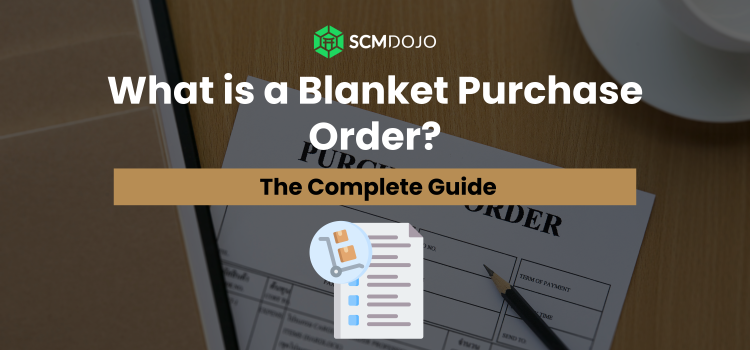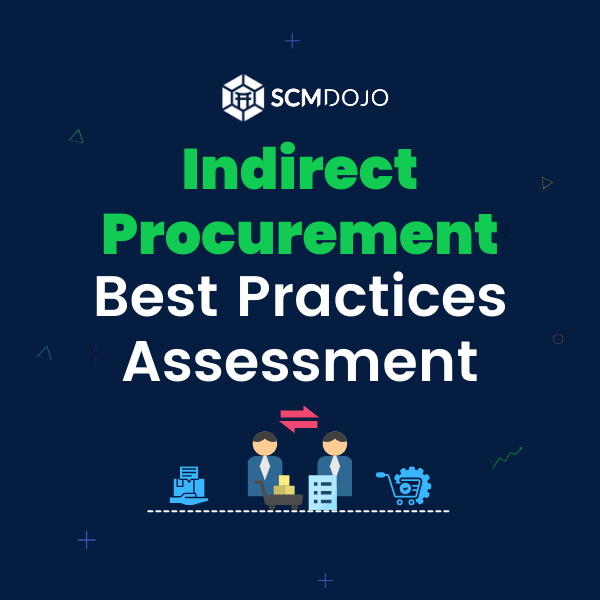Finding ways to improve operational efficiency and streamline the procurement process is always a top concern for leaders in purchasing and finance. The use of a blanket purchase order is one such strategy that has many advantages. This procurement tool is a significant complement to any purchasing strategy since it enables organizations to take advantage of predetermined rates and minimize administrative duties.
In this article, we’ll examine what a blanket purchase order is, what it means, and how purchasing leaders can use it to their advantage in their procurement procedures.
Blanket Purchase Order Definition – What exactly is it?
Many purchasing and financial directors find that using a blanket purchase order is an easy method to improve operational efficiency and streamline the procurement process. Simply put, blanket purchase orders let procurement managers benefit from predetermined costs while simultaneously lightening their workloads.
A blanket purchase order, also known as a standing purchase order, is a recurring, long-term arrangement between a business and a supplier to provide goods or services at a given price for a predetermined period of time.
Executing a blanket purchase order with the details—such as price and delivery date—pre-indicated is an effective technique to minimize processing delays and lost time if your company frequently pays for the same goods or services.
Multiple invoices with the same BPO ID may be sent in response from suppliers. Blanket purchase order restrictions can be imposed for a specific amount of money or a specific duration of time, like a year. Blanket Purchase Orders may also include item quality specifications in addition to the quantity, price, and time frame.
A single overarching PO may be used to consolidate several invoices, greatly streamlining planning and logistics for both sides. As a result, processing invoices takes less time, and delivery times are more consistent. For instance, a construction company with regularly scheduled work would need to purchase the same raw materials on a regular basis, or a building housing offices might need cleaning services once every few weeks.
Blanket Purchase Orders – Are They Contracts?
It’s simple to be unclear about the point at which a BPO becomes a contract. Additionally, it might be challenging to determine when it makes sense to execute a contract of this nature. At first glance, BPOs and contracts seem similar.
But just to be clear, when a contractor receives a purchase order, it becomes a contract. But not all contracts are purchase orders. Purchase orders may cross-reference the terms of a negotiated contract.
The blanket purchase order, which reflects the buyer’s offer to a supplier, is a business document and not a legal document. If accepted, the PO becomes a binding contract that may be enforced in court.
Contracts are a complex group of agreements related to recurrent orders that specify details like precise delivery dates, high standards for quality, and any special terms and circumstances.
What Should a Blanket Purchase Order Contain?
The following clauses of the agreement should be defined in blanket purchase orders:
- The length of the contract
- The cost and terms of the agreement
- Details regarding invoicing, including how the provider will submit and be paid for bills
- The item’s specs, including estimated quantity, size, and quality.
- Quantity, delivery locations, and timelines are all things to think about.
- Cancellation clause
What are the benefits of a Blanket Purchase Order?
A blanket purchase order makes sense when you anticipate recurring demand for goods or services that can be acquired from the same supplier. Some advantages of using a blanket purchase order include the following:
- Simple Framework:
Blanket purchase orders don’t require a lot of information. You don’t need information like production specifics, unit price, and so forth because it is primarily for services. Users will need the supplier name, amount, account numbers, start time, and finish date in order to deliver the service.
- Improve Efficiency:
Blanket purchase orders streamline the procedure of making lots of purchases. A company can create one buy order and receive against it numerous times, like in the example above, rather than creating 100 separate purchase orders. A blanket purchase also saves money on administrative costs and frees up staff to work on other crucial purchase orders by eliminating the need to look for new suppliers or organization gets and pricing.
- Increase Purchasing Power:
With the help of blanket purchase orders, a business may consolidate transactions that would typically be spread out over a long period of time and save money on volume. Additionally, these POs give a business the ability to combine purchases from many departments and locations to strengthen its negotiation position.
- Consistent Pricing:
Every shipment of a large order will be the same price if a price is agreed upon during negotiations, even if the market value increases later. Consistent prices are simpler to prepare for the finance office than varying dollar quantities.
- Reducing Inventory Requirements
The whole terms and conditions of a transaction, including the quantity required and the anticipated delivery date, are spelt out in a blanket purchase order. This lessens the need for a business to have extra inventory on hand since it knows the supplier will fulfill the order in accordance with the pre-arranged terms.
To benefit from a blanket PO, businesses must look at data that can provide the precise quantity of the good or service they’ll need over a certain length of time. During contract negotiations, corporations may leave room for adjustments as they supply the goods and services. If a prognosis turns out to be inaccurate or if circumstances change, the company can suffer a financial loss. A price agreed upon during contract negotiations could end up being a disadvantage if the product value drops over the length of the order period.
When to Use Blanket Purchase Orders in Procurement?
First and first, as with any other type of purchase order, confirm that you actually require the goods or services and that you can trust the supplier. When a demand for a good or service—such as an indirect purchase — will persist over time and you have confidence in the supplier to reliably fulfill it, blanket purchase orders should be used.
In a variety of industries, procurement teams frequently employ blanket orders. Because they offer a straightforward way to save costs and improve operations. As you undoubtedly already know, many suppliers are keen to offer discounts when a company places a significant order or commits to several deliveries. In the additional following situations, blanket instructions are recommended and can be regarded as best practices for blanket purchase orders:
- When precise information and a well-defined actual cost are both available.
- When a significant amount of the same goods or services are needed over a long period of time, usually a year.
- If you purchase in volume, you might be able to fully benefit from superior contract conditions such bulk discounts.
- Stocking risk and costs are reduced when supplies are spaced out.
- When a single customer is able to fulfill all of the contract’s requirements throughout the duration of the agreement.
When Not to Use a Blanket Purchase Order
When considering the use of a blanket purchase order, it’s essential to understand situations in which it may not be appropriate. Here are some instances when it is recommended not to use a blanket purchase order:
- Price Uncertainty: If the price of the product or service is not known or subject to change without notice, it is not advisable to use a blanket purchase order. Since the primary purpose of a blanket PO is to lock in predetermined prices, the absence of clear pricing information would undermine its effectiveness.
- Questionable Quality: If there are concerns about the quality of the product or service being procured, it is best to avoid using a blanket purchase order. These POs are typically used for recurring purchases of consistent quality items. If the quality is questionable, it’s better to establish individual purchase orders to maintain control and ensure satisfactory delivery.
These POs should include the following information:
- Price and Pricing Arrangements: Clearly define the agreed-upon price or pricing structure within the blanket purchase order. This ensures transparency and avoids confusion during invoice processing.
- Coverage Period: Specify the duration for which the blanket purchase order is valid. This helps establish a clear timeline for procurement activities and allows for better planning.
- Terms and Billing Conditions: Outline the terms and conditions related to billing and payment processes. This includes information on how the supplier should submit invoices and any specific payment terms that need to be followed.
- Description and Details: Provide a comprehensive description and specific details of the items or services covered by the blanket purchase order. This ensures clarity and accuracy in the procurement process.
- Cancellation Clause: Include a cancellation clause that specifies the conditions under which the blanket purchase order can be terminated. This provides flexibility and protects both the buyer and the supplier in case of unforeseen circumstances or changes in requirements.
By considering these factors and including the necessary information, purchasing leaders can effectively utilize blanket purchase orders and optimize their procurement processes.
Conclusion
The use of a blanket purchase order has many benefits. Spend some time with your team and ensure that everyone understands how to construct one; this will improve financial planning, foster stronger relationships with suppliers, and result in an all-around more effective process.
–
About the Author- Dr Muddassir Ahmed
Dr MuddassirAhmed is the Founder & CEO of SCMDOJO. He is a global speaker, vlogger and supply chain industry expert with 17 years of experience in the Manufacturing Industry in the UK, Europe, the Middle East and South East Asia in various Supply Chain leadership roles. Dr. Muddassir has received a PhD in Management Science from Lancaster University Management School. Muddassir is a Six Sigma black belt and founded the leading supply chain platform SCMDOJO to enable supply chain professionals and teams to thrive by providing best-in-class knowledge content, tools and access to experts.
You can follow him on LinkedIn, Facebook, Twitter or Instagram



